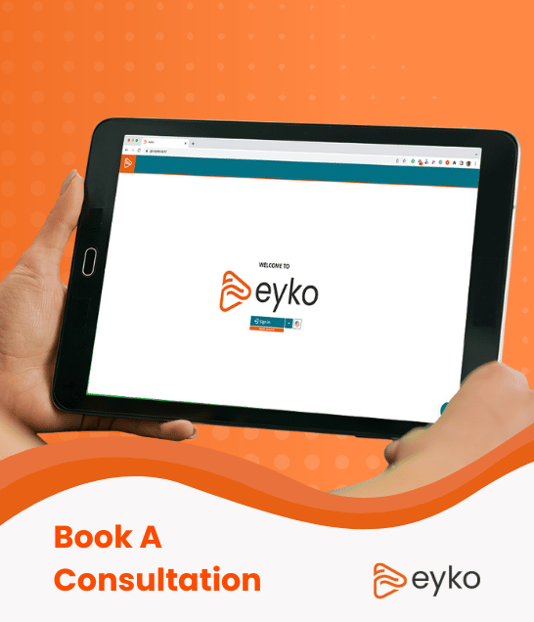Time for a strategic approach to planning data integration.
Business planning systems like Anaplan, Vena, and Bizview are rapidly becoming some of the most strategic systems to the business. While ERP systems like JD Edwards and NetSuite and CRM systems like Salesforce hold the transactional data around what has happened in your business, the planning is a compass that not only guides where your business wants to go, but also how you’re tracking against that goal.
Most planning applications will offer some sort of forecasting capability. This is the ability to take the historical data in transactional systems and use it to predict what might happen in the future. This is incredibly valuable because it allows businesses to make informed decisions about things like price changes, product launches, and even hiring new staff.
Planning is strategic, but planning data integration is not.
What separates the best planning applications from the rest is their ability to not just forecast, but also model different scenarios. So, if you’re considering launching a new product, you can model-out what impact that would have on your sales, margins, and even headcount. This kind of modeling is incredibly powerful because it allows businesses to experiment with different ideas and see what the potential impact would be before making any decisions.
The best planning applications will also offer what’s called “what-if” analysis. This is the ability to change one or more assumptions in your model and see how that impacts the outcome. For example, you could change your assumption about how many units of a new product you think you’ll sell and see how that impacts your overall revenue and profit margin.
It's clear why planning systems are both critical and strategic for organizations.
By contrast, what’s not strategic is how most companies gather and feed data into their planning system. Too many companies rely on a combination of CSVs and SQL Scripts that are just not sustainable, auditable, or scalable.
Data integration is the key. Data integration and preparation tools make it possible to connect all your data sources, automate data cleansing and transformation, and schedule regular data updates. A thoughtful data integration strategy ensures that your planning system always has the most accurate and up-to-date data, which is critical for making sound strategic decisions.
Not using a data blending and preparation tool can impact your business in several ways:
- You won’t have visibility into all of your data, which could lead to decision-making based on incomplete information
- You’ll spend more time manually gathering and preparing data, which leaves less time for analysis and strategic thinking
- Your data will be more susceptible to errors, which could lead to bad decisions being made
- It will be more difficult to scale your business if you’re relying on manual data processes.
A thoughtful approach to data blending and preparation is the key to making your planning system and process more strategic. By automating data gathering and transformation, you can free up time to focus on more important things, like analyzing data and making decisions that will positively impact your business.
One method of data gathering and integration is using CSV exports and imports. This CSV approach to integration offers a basic way to move information from enterprise applications into their planning system for high-level financial planning, however most organizations purchase a strategic planning system because they want it to tackle more than just financial planning; organizations see the opportunity to use the systems for sales and operations planning, HR and workforce planning, and demand/supply chain planning.
For those who can remember – it used to be that when you selected your planning software the software vendor said that it would be easy to get your data from other enterprise applications into your planning system. They probably explained that you can import the data via CSV format. What they didn’t tell you was how hard it was going to be to create the CSV in the first place.
When pulling data from multiple systems in order to feed your planning system it's not as simple as creating any old CSV. The data needs to be blended to address any master data management issues that exist across systems.
People normally assume the data is accurate in each system, but soon realize it’s not accurate once you’re dealing with data pulled from multiple systems.
The finance system has the legal customer name for invoicing, but the CRM system has the name the salesperson set up when creating the account. This is just one example, but you get the picture - as you combine data from more and more systems to later feed into your planning system, the reconciliation process becomes more and more complex.
While CSV files are commonly used to transfer data between different systems, this method of data integration is not straightforward because the data is not necessarily similar across all systems. There can be discrepancies in terminology, format, and accuracy, which can lead to issues when trying to combine data from multiple sources.
It’s clear CSV file uploads are not enough for data integration for planning. You need a solution that thoughtfully addresses data integration and blending, giving you one version of the truth.
A data integration and blending platform connects to all of your different systems and cleanse, standardize, and enrich the data before it is exported to CSV. This will ensure that the data is consistent and accurate, making it much easier to work with when you are trying to combine multiple data sources.
A platform to support modern planning cycles.
The pace of business change means that most companies have moved away from an annual budgeting and planning cycle to something more frequent; many companies have moved to continuous planning and forecasting. As the frequency of your planning and forecasting activities increases, gaps are exposed in any planning data preparation and integration that relies heavily on manual activities like CSV uploads.
With the emergence of the best-of-breed planning systems like Anaplan, Vena, and Bizview, companies are struggling with the dilemma of whether they should put their finalized planning data back into their ERP system or take their actual data and put it in their planning system so they can do their typical Actual/Plan/Variance type reporting and dashboards. There is no right and wrong answer here, however this is just one example of how the wrong data integration strategy can seriously impact your options.
Regardless of your data integration strategy for your planning system, it’s becoming increasingly more important to have one that can automatically handle the differences between the way data is represented in multiple systems. The ability to gain insights from your planning system and the ease with which you can deliver the data to the planning the system are inextricably linked. The harder it is to deliver accurate data for planning the less time you have for strategic planning and modern planning cycles.
Your planning system needs a single place to gather, clean, enrich, reconcile, and manage all your planning data. It’s time for a data integration hub that automatically manages these tasks and streams this trusted data directly into any planning as often as you want without time-intensive, manual intervention.
A data integration and blending hub has many advantages:
- you no longer must manually gather data from different data sources or reconcile data sets
- data is cleansed, de-duped as it's ingested into the data integration hub
- enrichment and transformation can be applied to data sets in the data integration hub, making data more useful for planning
- a data integration and blending hub can be used to create a single source of truth for data sets that are used in planning applications
- a data integration and blending hub can be used to track changes over time, providing a historical record of data that can be used for planning purposes
A data integration and blending hub can save you time and effort in data gathering and preparation and ensure that your planning data is of the highest quality.
To see eyko’s blending platform in action blending data from JD Edwards, Salesforce and 5 other enterprise applications check out this video.
Interested in how eyko Application Intelligence makes this so easy with inbuilt smarts that understands the idiosyncrasies of the systems, so you don’t have to? Check out this video on eyko Application Intelligence.
Share this
You May Also Like
These Related Stories

Can data blending replace data preparation & integration?

Application Intelligence™ – why should you care?

